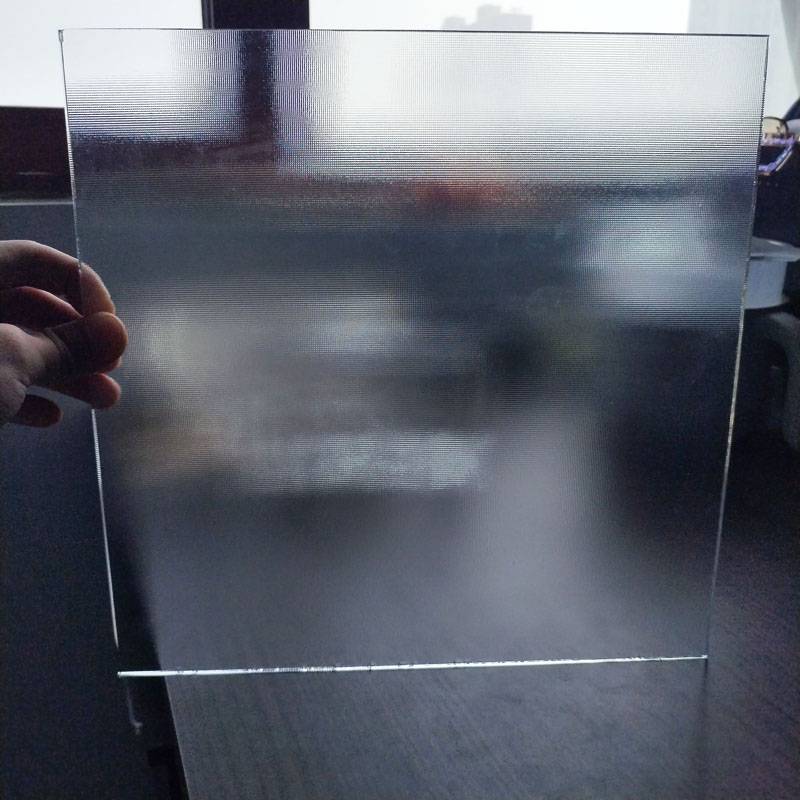The Production of Tempered Glass A Comprehensive Overview
Tempered glass, also known as toughened glass, is a type of safety glass that has been treated to withstand impact and thermal stress. Its unique properties make it a popular choice for applications ranging from car windows to shower doors, and even glass facades in modern architecture. The production of tempered glass involves several steps, each crucial to achieving the strength and durability that the material is renowned for.
1. Raw Material Preparation
The first step in the production of tempered glass is the selection and preparation of raw materials. Typically, the primary component of tempered glass is silica sand, which is mixed with other materials such as soda ash and limestone. These components are carefully measured and thoroughly mixed to create a homogeneous batch. The quality of the raw materials is critical, as impurities can greatly affect the final product’s properties.
2. Melting Process
Once the raw materials are prepared, the mixture is fed into a furnace where it is heated to temperatures exceeding 1500 degrees Celsius (2732 degrees Fahrenheit). This melting process transforms the solid materials into a liquid glass. The furnace must maintain consistent heat throughout to ensure even melting, and it requires a carefully controlled environment to prevent contamination and defects in the glass.
3. Forming the Glass
After the raw materials have melted, the liquid glass is poured into molds or floated on a bed of molten tin to create flat glass sheets—a method known as the float glass process. The thickness of the glass can be controlled during this stage, and glass sheets can vary from a few millimeters to several centimeters in thickness, depending on their intended application.
4. Annealing
Following the forming process, the glass sheets undergo an annealing stage. In this step, the sheets are slowly cooled in a controlled environment, which relieves internal stresses that could lead to fractures. The annealing process is critical; if not done properly, the glass could remain brittle and susceptible to breakage.
tempered glass production
5. Cutting and Edge Processing
Once the glass has been properly annealed and cooled, it can be cut to size according to the specifications of customers or designers. The edges of the glass are often finished through processes such as grinding and polishing to ensure they are smooth and safe to handle. This step is vital not only for aesthetics but also for safety, as sharp edges can pose significant risks.
6. Tempering
The defining step in the production of tempered glass is the tempering process itself. The glass sheets are reheated to a temperature between 600 and 700 degrees Celsius (1112 to 1292 degrees Fahrenheit) in a tempering oven. Once they reach this temperature, the glass is rapidly cooled using air jets—a process known as quenching. This rapid cooling creates a surface compression and enhances the strength of the glass, making it up to five times stronger than standard untempered glass.
7. Quality Control
Quality control is an integral part of the tempered glass production process. Throughout each production stage, inspectors monitor various parameters such as thickness, optical clarity, and stress levels. Advanced technologies such as optical inspection systems are often employed to detect any imperfections. This vigilance ensures that only high-quality tempered glass reaches the market.
8. Application and Benefits
Tempered glass is celebrated for its strength, safety, and thermal resistance. When broken, it shatters into small, blunt pieces that are less likely to cause injury, making it ideal for safety applications. Additionally, its ability to withstand sudden temperature changes makes it suitable for use in environments where heat resistance is crucial, such as in kitchen appliances and exterior windows.
In conclusion, the production of tempered glass is a detailed and intricate process that combines science and artistry. From raw material selection to final inspection, each phase plays a pivotal role in ensuring that the end product is not only durable but also safe and visually appealing. As demand for high-performance materials continues to rise, tempered glass will undoubtedly remain at the forefront of innovation in the manufacturing industry.
 Afrikaans
Afrikaans  Albanian
Albanian  Amharic
Amharic  Arabic
Arabic  Armenian
Armenian  Azerbaijani
Azerbaijani  Basque
Basque  Belarusian
Belarusian  Bengali
Bengali  Bosnian
Bosnian  Bulgarian
Bulgarian  Catalan
Catalan  Cebuano
Cebuano  Corsican
Corsican  Croatian
Croatian  Czech
Czech  Danish
Danish  Dutch
Dutch  English
English  Esperanto
Esperanto  Estonian
Estonian  Finnish
Finnish  French
French  Frisian
Frisian  Galician
Galician  Georgian
Georgian  German
German  Greek
Greek  Gujarati
Gujarati  Haitian Creole
Haitian Creole  hausa
hausa  hawaiian
hawaiian  Hebrew
Hebrew  Hindi
Hindi  Miao
Miao  Hungarian
Hungarian  Icelandic
Icelandic  igbo
igbo  Indonesian
Indonesian  irish
irish  Italian
Italian  Japanese
Japanese  Javanese
Javanese  Kannada
Kannada  kazakh
kazakh  Khmer
Khmer  Rwandese
Rwandese  Korean
Korean  Kurdish
Kurdish  Kyrgyz
Kyrgyz  Lao
Lao  Latin
Latin  Latvian
Latvian  Lithuanian
Lithuanian  Luxembourgish
Luxembourgish  Macedonian
Macedonian  Malgashi
Malgashi  Malay
Malay  Malayalam
Malayalam  Maltese
Maltese  Maori
Maori  Marathi
Marathi  Mongolian
Mongolian  Myanmar
Myanmar  Nepali
Nepali  Norwegian
Norwegian  Norwegian
Norwegian  Occitan
Occitan  Pashto
Pashto  Persian
Persian  Polish
Polish  Portuguese
Portuguese  Punjabi
Punjabi  Romanian
Romanian  Russian
Russian  Samoan
Samoan  Scottish Gaelic
Scottish Gaelic  Serbian
Serbian  Sesotho
Sesotho  Shona
Shona  Sindhi
Sindhi  Sinhala
Sinhala  Slovak
Slovak  Slovenian
Slovenian  Somali
Somali  Spanish
Spanish  Sundanese
Sundanese  Swahili
Swahili  Swedish
Swedish  Tagalog
Tagalog  Tajik
Tajik  Tamil
Tamil  Tatar
Tatar  Telugu
Telugu  Thai
Thai  Turkish
Turkish  Turkmen
Turkmen  Ukrainian
Ukrainian  Urdu
Urdu  Uighur
Uighur  Uzbek
Uzbek  Vietnamese
Vietnamese  Welsh
Welsh  Bantu
Bantu  Yiddish
Yiddish  Yoruba
Yoruba  Zulu
Zulu 

